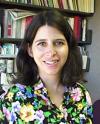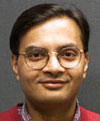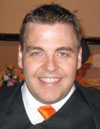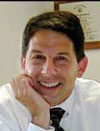|
Student Project
Resource People
Student project resource people
are individuals with a variety of professional backgrounds who have agreed to
assist students with their projects. Specific expertises include mechanical
engineering, occupational therapy, medical devices, assistive technology
devices, and prosthetics / orthotics.
 |
- Deborah E. Kenney, MS,
OTR/L
- kenney5 -at- comcast.net
- Deborah Kenney has been an
occupational therapist at the VA Palo Alto Health Care System for the last 17
years - working both in the clinic and at the VA Rehabilitation Research &
Development (RR&D) Center where she has collaborated on numerous design and
research projects with the engineers and graduate students. Her work has
included testing and integrating technology into the rehabilitation setting in
the areas of Parkinson's Disease, CVA (stroke), Spinal Cord Injury, hand
therapy, and balance as related to aging. Ms. Kenney currently splits her time
between her clinical work with post-stroke survivors (REACH) and the RR&D
Center. She is also a frequent guest lecturer with the Multiple Sclerosis
Society of Santa Clara.
|
 |
- Douglas F. Schwandt,
MS
- doug.schwandt -at-
gmail.com
- 650/464-3578
- Doug Schwandt began his
career in Rehabilitation Engineering with a Stanford ME210 (now ME310) design
project, on a student team creating the Handbike, the first arm-powered
two-wheeled bicycle for lower-limb disabled. After graduation, he continued the
Handbike development, and went on to design various other devices for the
disabled with the Design Development team at the Palo Alto VA Rehab R&D
Center, including finger-spelling hands, hyper/hypo gravity devices and
specialty cycle ergometers. Over the years, Doug has also consulted on various
exciting and challenging projects outside of the VA, including exercise
concepts for long-term space travel, MRI compatible fixtures and mobility
devices, and robots for physical therapy. No longer a VA employee, Doug
continues to work as a consultant to universities and companies as a free-lance
consulting design engineer, and part-time as a springboard diving
coach.
|
 |
- Sakti Srivastava, MBBS,
MS
- sakti -at- stanford.edu
- Dr. Srivastava trained in
India and the UK as an Orthopedic & Hand surgeon and has been involved in
the teaching of Anatomy and Basic Surgery for many years. In particular he has
taught medical students, paramedical students, residents, undergraduates, and
engineering students in the Division of Anatomy at Stanford School of Medicine
for the last five years. He has also been involved in teaching activities in
the Division of Hand Surgery at Stanford School of Medicine. He is the
instructor for ME294, Medical Device Design.
|
 |
- Mark Felling, EE,
MBA
- mark -at-
broadenedhorizons.com
- 612/851-1040 ext 101
- Mark began designing and
inventing solutions both for himself and others soon after his plane crash in
2003 using his engineering background and experience teaching testing and
quality to development groups at high-tech companies around the world. Guided
by an intimate understanding of the unique needs of wheelchair users with upper
extremity limitations as a C5 quadriplegic himself, Mark created
Broadened Horizons to introduce
solutions focusing on innovative simplicity to maximize cost
efficiency, compatibility, reliability, and ease of use.
Mark and
Broadened Horizons can also be
found on Facebook.
|
 |
- Gary M. Berke, MS, CP,
FAAOP
- gmberke -at-
stanford.edu
- 650/365-5861
- Gary M.Berke is an Adjunct
Clinical Instructor and Director of Prosthetics in Stanford's Department of
Orthopaedic Surgery and owner of Gary M. Berke Prosthetics /
Orthotics in Redwood City. He has worked and lectured nationally and
internationally on prosthetic care and has multiple publications. He has a keen
interest in investigating cost effective technologies for enhancement of the
lives of those required to use prostheses and orthoses daily while reducing the
cost of prothetic and orthotic care in the future.
|
|